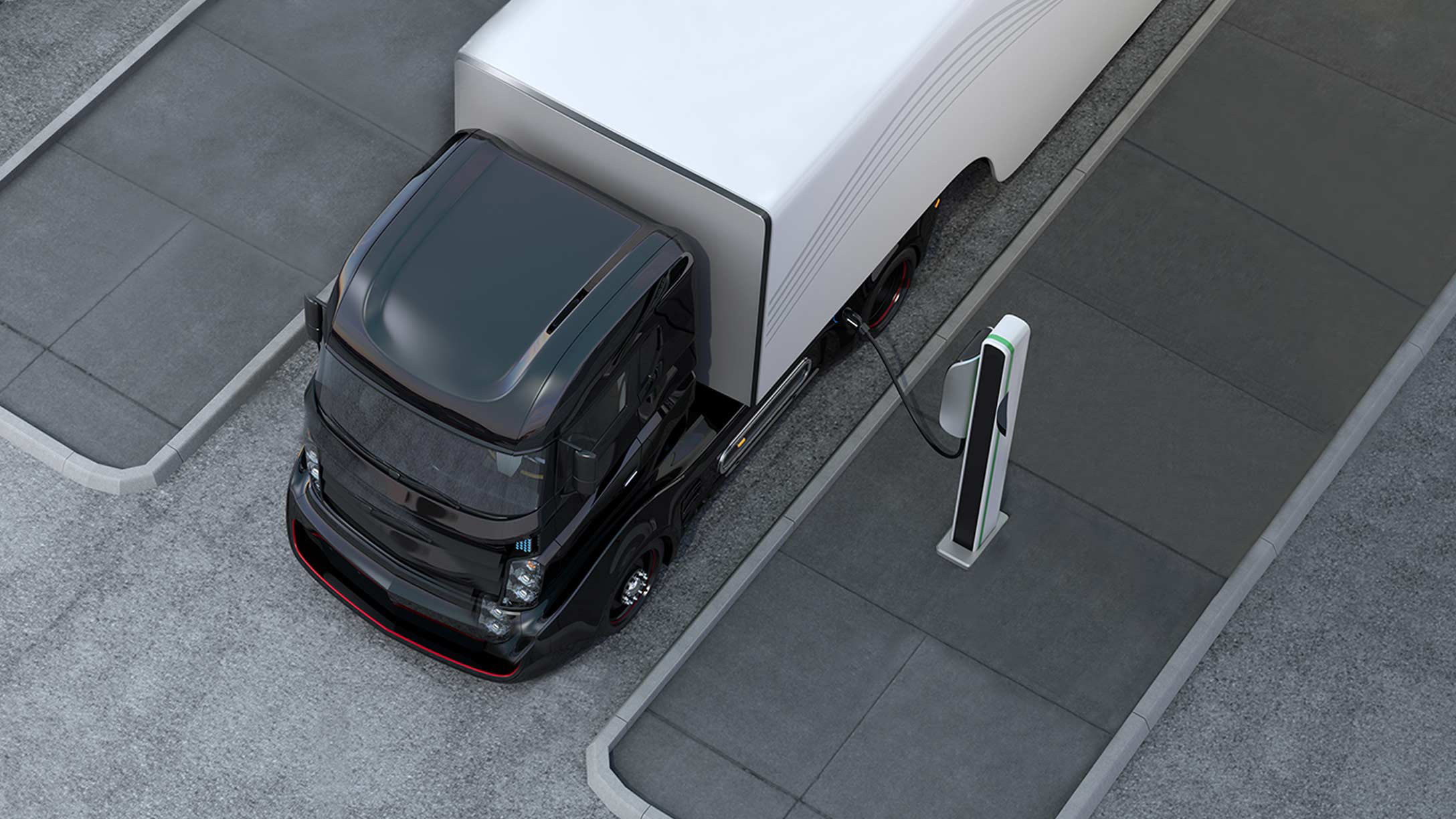
Medium and heavy-duty electrification trends

Table of Contents
- Introduction
- OEMs move to embrace EVs
- Barriers to electrification in the heavy-duty sector
- Benefits of electrification in the heavy-duty sector
- The implications of adding electric models to heavy diesel industries
- Government interventions to accelerate the transition of heavy-duty transport to electric
- The importance of varied EV model support for complete fleet management
- References
Introduction
Electric vehicles (EVs) have previously existed predominantly in the light-duty sector of the vehicle market. However, that is all set to change, as electric trucks (eTrucks) and electric buses (eBuses) start to increase in market share over the coming years.
There’s no turning back the clock on the electrification of the heavy-duty sector. Most of the major Original Equipment Manufacturers (OEMs) and several start-ups are preparing to launch their respective battery electric or fuel-cell/battery models in 2021/22, and the electric bus market is already well established in the U.S.
Although this segment of the commercial vehicle market is still in its infancy, the world’s largest manufacturers have made it clear that they see electrification as an increasingly important piece of the freight transportation industry. By weight, 67% of freight is moved less than 250 miles in the United States [1], an operating range that should be well within the real world capabilities of the new models hitting the market.
With the early adoption of EVs, fleet and sustainability managers can get ahead of stringent emission regulations, which will make it inevitable that transit agencies, school districts and logistics companies deploy cleaner fleets.
OEMs move to embrace EVs
As the potential market for eTrucks heightens, automakers and suppliers are intensifying their investment in research and development. Several OEMs are now offering all-electric medium- and heavy-duty models.
Electric heavy-duty trucks
In the U.S., BYD has launched four medium- to heavy-duty all-electric models: the long-range Class 8 Day Cab, a Class 6 truck, and two refuse trucks (Class 6 and Class 8).
The Class 8 Day Cab has a range of 93 miles, a top speed of 65 mph, and a load capacity of 31.5 tons. The truck’s battery packs can recharge in two hours with a high-speed DC system or about 14 hours with a standard 240-volt charging system [2]. The brewing company Anheuser-Busch deployed 21 BYD Class 8 trucks in its Southern California fleet at the end of 2019. Internationally, BYD has deployed thousands of medium- and heavy-duty all-electric models, including market-specific models such as a double-decker bus in the UK and street sweepers in China.
Lion Electric manufacturers Class 5 to Class 8 all-electric urban trucks and buses. To date, Lion has shipped several hundred fully electric buses and trucks. According to the company, the trucks are designed with harsh climate conditions in mind. The Class 6 truck has a range of up to 180 miles and 1,800 ft-lb maximum torque, while the Class 8 has a range of up to 170 miles of range with a maximum torque of 2,507 ft-lb. Lion is also launching a Class 8 tractor truck with a range of up to 210 miles and 5,300 ft-lb maximum torque [3].
Daimler Trucks launched their Class 8 all-electric eCascadia truck, under the Freightliner brand, in June 2018. Designed for local and regional distribution and drayage, Daimler claims that it has a 250-mile range and can recharge to 80% in 90 minutes [4].
Their other all-electric model is the Class 6 Freightliner eM2 106. This medium-duty truck has a 230-mile range and is intended for local distribution and last-mile logistics applications. Start of production for both trucks is scheduled for Q4 2021, in their Portland facility [5].
Volvo’s VNR Electric is their zero-emission truck offering. In September 2020, they began a pilot project with a supply chain logistics firm to demonstrate the ability of the truck to successfully transport freight under a variety of operating conditions [6]. The manufacturer isn’t quoting an exact range for the VNR, as one of the pilot program’s aims is to define this. However, the working range for the program is between 75 and 175 miles.
Global premium truck manufacturer, Paccar, is set to release a number of electric truck models, under its Peterbilt and Kenworth brands. The Model 220EV from Peterbilt is a Class 6 truck designed for pickup and delivery, and offers a range of up to 200 miles, while the Model 579EV is ideal for short haul and drayage applications, offering up to 150 miles of range [7]. Available under Paccar’s Kenworth brand, the K270E and K370E are available to order. Offering high-density battery packs that promise up to 200 miles of range and rapid one-hour DC fast charging, these trucks are ideal for local distribution and last-mile delivery applications.
Navistar has announced their upcoming electric truck will be available in 2022. The eMV will be an electric version of Navistar’s International MV medium-duty truck, and is expected to offer 250 miles of range. With a peak power of over 474 kW, Navistar claims its eMV will be able to pull any load required [8].
Mitsubishi Fuso provides a Class 4 all-electric truck named the eCanter. The eCanter leverages a Mercedes-Benz battery pack providing 82.8kWh of energy and rated range of 100km [9].
Kalmar Ottawa has released an all-electric version of its Terminal Tractor, named the Ottawa T2E electric. The powertrain leverages Meritor’s TransPower powertrain, providing 132kWh of energy [10]. As these vehicles operate within a terminal, translating that energy into maximum range isn’t as applicable.
Australia’s SEA Electric created a proprietary electric power-system technology to power urban delivery and distribution fleet trucks. To-date, the company has released 7 SEA-Drive models, deployed in 5 countries and is a market leader in commercial vehicle electrification [11]. Their SEA-Drive technology adapts to a large range of trucks allowed for the electrification of third-party commercial vehicles.
Tesla first unveiled its semi truck in 2017, but the production date for this truck has been pushed back to 2021. There will be two models available: one with a 300-mile range, and the second capable of between 500 to 600 miles. Tesla promises a two-year payback period for these trucks, thanks to fuel savings and lower maintenance requirements. Pride Group Enterprises, a truck-leasing company, recently announced a significant investment in the Tesla Semi truck, reserving 150 of the vehicles with the option to buy 500 of them [12].
Some notable up-and-coming electric trucks round out the heavy-duty space. Keep an eye on startups, including Hyliion, Arrival, and Lightning eMotors as they ramp up their efforts to produce the next batch of available electric trucks in the coming years.
Electric pickups
The Ford F-150 electric pickup has been heavily anticipated, and is due to launch in mid-2022, with an estimated range of over 300 miles. It will feature a giant front trunk storage area and dual motors, and Ford claims that it will be their most capable truck to date [13].
There are currently five other electric pickup trucks due for release to the U.S. market within the next couple of years. These are Tesla's Cybertruck, Bollinger's B2, Lordstown Motor's Endurance, GMC's Hummer EV and Rivian's R1T.
Tesla’s Cybertruck has the highest reported speed for its tri-motor version, reaching a top speed of 130mph. The tri-motor is also likely to boast the highest towing capacity on the market, at 14,000 pounds.
For horsepower and torque, the GMC Hummer EV will be the most powerful on the market, rated at an estimated 1,000 horsepower, with 11,500 pound-feet of torque [14].
Electric buses
The six main suppliers of electric buses in the U.S. are NFI Group Inc., Proterra, Thomas Built, Gillig, BYD and Lion Electric.
In September 2020, Proterra unveiled its latest electric bus model, the ZX5. This electric transit vehicle boasts the most energy storage of any 40-foot electric bus currently on the market. The ZX5 can be equipped with 660 kWh of energy storage, to deliver up to 329 miles of drive range [15].
Daimler’s subsidiary Thomas Built Buses has partnered with Proterra to deploy a series of all-electric school buses, named the Saf-T-Liner C2 Jouley. This bus can be configured with up to 220kWh providing up to 135 miles of range [16].
BYD is the largest global manufacturer of electric buses, with nearly 40,000 electric buses in service worldwide and its principal market in China. At its manufacturing facility in Lancaster, California, it produces transit bus models from the 30-foot K7 to the 60-foot K11, and coach models from the 23-foot C6 to the double-deck, 45-foot C10MS [17].
New Flyer, a subsidiary of NFI Group Inc., has three full production plants in the U.S. and Canada where they manufacture buses in a range of power sources – diesel, natural gas, hydrogen fuel cell, hybrid and full battery electric – all from the same production line. Their Xcelsior CHARGE has up to 466kWh of energy storage and a range of up to 225 miles [18].
Lion Electric focuses predominantly on the school bus market, with Class A, C and D models. Their Class C bus takes up to 72 passengers, with a range of between 65 and 155 miles [19]. The company has now created an urban minibus for paratransit, which is available for pre-order.
Gillig has partnered with Cummins to deliver a zero-emission fully electric transit bus model. The design leverages Cummins’ BP74E battery, providing 444 kWh of rated energy that can provide a real-world range of 150 miles [20].
The electric bus market
With predictable routes and the ability to depot charge overnight, during low energy rate periods, school and urban transport bus routes make strong candidates for electrification.
According to data from Prescient & Strategic Intelligence, the U.S. electric bus market is expected to grow at a CAGR of 23.9% between 2019 and 2024, reaching a total value of $1,554.5 million [21]. About half a million electric buses are currently in circulation, most of which are currently in China, but their market share will gradually fall through the 2020s as the rest of the world catches up. Bloomberg NEF predicts that eBuses will represent over 67% of the global bus fleet by 2040 [22].
In Europe, the electric bus market tripled in size between 2018 and 2019, with almost 12% of new city buses being battery electric. Interact Analysis forecasts that by 2025, approximately 40% of new city buses on the continent will be battery electric [23].
Successful pilot programs
Seneca, South Carolina
In 2014, Seneca became one of the first cities in the world to launch an all-electric municipal bus fleet. The buses exceeded expectations in several areas:
- Charging time: 6 minutes per charge, instead of the manufacturer’s claims of 10 minutes per full charge.
- Range: Proterra claimed the buses would have a range of 30 miles, while in the real world, drivers are getting 40+ miles.
- Battery life: Proterra believed that the useful life of the batteries would be about six years, when the capacity would reach 80% and would need replacing. The buses entered their sixth year in September 2019 and were still charging at 98-100%.
Chicago, Illinois
With temperatures in Chicago reaching an average low of 18°F in the winter, this was one of the first tests by a major U.S. transit agency of the performance of electric buses in extreme cold weather. The CTA’s first two electric buses entered into service in October 2014, operating on six routes.
The two buses have saved the agency more than $24,000 annually in fuel costs and $30,000 annually in maintenance costs, compared to new diesel buses purchased in 2014. They have also had no difficulty dealing with Chicago’s weather and extreme temperatures.
King County, Washington
King County has successfully tested a fleet of battery electric buses since 2016 and has ambitious plans for a large-scale rollout over the coming years. A major focus of the trial was establishing the reliability of the buses in hilly, rainy conditions. The vehicles’ speed and responsiveness was good, disparity between predicted and actual performance was not significant, and the electric buses were more energy efficient than their diesel buses.
While the transportation agency’s spending on energy for its electric buses was high, due to utility fees for high power usage (demand charges), the public health and societal benefits of electric buses more than justified the expense. King County Metro includes the environmental and health benefits of buses in its evaluation of their costs and benefits, estimating that the total societal cost over the life cycle of a 40-foot diesel-hybrid bus is $121,000, versus $19,000 for a 40-foot electric bus using renewable energy.
Twin Rivers, California
The district found that fuel costs for both the school buses in their trial were between $0.16 and $0.19 per mile, versus $0.82-$0.86 to fuel the diesel buses, representing a 75-80% saving. This far exceeded the district’s expectation of a 60% saving. Total savings equated to approximately $15,000 per year on energy and maintenance costs [24].
Santiago de Chile
In Santiago, a year-long pilot of two electric 12-meter BYD K9FE buses showed that operating costs were $0.10/km, compared to a cost of $0.43/km for a comparable diesel bus. This resulted in the operator purchasing a further 100 electric buses, and Chile’s federal government setting a goal of electrifying the country’s entire bus fleet by 2040 [25].
Cities with targets to implement eBuses
Los Angeles plans to replace all 2,300 of its buses with 100% electric by 2030. The Mayor of L.A. launched the Climate Mayors EV Purchasing Collaborative, an online platform that guides and encourages city leaders to obtain EVs for municipal fleets. He is also the chair of C40 Cities, enabling L.A.’s impact on electrification of municipal fleets to become global in its reach.
New York has the largest bus fleet in the nation, and the Metropolitan Transport Authority plans to convert all of its buses to electric by 2040.
Seattle plans to have a 100% electric municipal fleet by 2030. Following the successful pilot project, the region’s King County Metro transit agency also plans to electrify its entire fleet of 1,400 buses by 2040 [26].
The success of electric buses in these three cities is mirrored in many other cities and regions across the U.S.
In Europe, lawmakers reached an agreement in February 2019 that requires at least a quarter of new buses purchased by public authorities in cities to be “clean” by 2025, and at least a third by 2030. “Clean” buses are classed as those powered by gas or electricity [27].
Barriers to electrification in the heavy-duty sector
Range
One of the greatest challenges facing heavy-duty electric vehicles is range. Trucks are intended to haul heavy trailers and loads; demanding tasks that contribute to drain a battery faster than most manufacturers’ claims.
However, while pickups may often work in rural areas with large daily distances to cover, many heavy-duty distribution fleets have duty cycles of 100 miles or less, which should be comfortably within the capabilities of the new models hitting the market.
Load weight is another consideration in the heavy-duty sector. The benefits of eTrucks will certainly depend on load weight as a factor, as it can potentially result in higher electricity consumption and shorter range capability. Load capacity claims from OEMs suggest that they will be capable of matching today’s load standards, but they will require real-world data to prove this out.
Charging times
In order to counter the issue of range, manufacturers currently have to use larger, or more, batteries. For example, the Volvo VNR Class 8 has six battery packs to deliver 300kW of usable battery capacity.
The larger the battery capacity, the longer it takes to charge. Most eTrucks will take well over two hours to fully recharge on the fastest available charging systems, and some vehicles will have to plug in overnight to fully recharge a drained battery.
Carrying capacity
For a given GCWR (gross combined weight rating), electric trucks can’t carry as large a payload as their diesel counterparts, because their tractor weighs significantly more. This can leave the trucks with a several thousand pound shortfall in carrying capacity. This results in logistics companies needing more eTrucks to do the same amount of work as their conventional alternatives.
However, as battery technology continues to advance, battery weight is almost certain to fall as fewer provide the same usable capacity. This will in turn result in a greater payload capacity.
Effects of temperature
Extreme temperatures limit the performance of electric vehicles’ lithium-ion batteries, affecting their ability to discharge and recharge effectively. However manufacturers have countered this effect with the use of battery thermal management systems. These keep the battery in the right temperature zone, so that extreme cold or heat have little direct impact on achievable range.
The greater impact on battery function and range comes from the operation of systems to enhance driver comfort in extreme climates, such as heating and air conditioning, together with the energy required to heat or cool the batteries themselves.
The logistics and distribution industries require highly reliable vehicles, and OEMs are directing R&D funds into robust battery management systems and new battery technologies to counter this effect.
Benefits of electrification in the heavy-duty sector
Improved torque
A feature that’s unique to eTrucks is instant torque, or the ability to deliver peak torque at zero RPM. This enables electric trucks to tow and haul a large payload at much lower speeds than their conventional counterparts.
At zero RPM, an electric motor is able to convert all of the electricity into torque, without any back electromagnetic force (EMF). It is this feature that enables electric vehicles to have such strength and fast acceleration from a dead stop, even if that high torque diminishes as they gain speed [28].
Reduced maintenance requirements
Although pure electric vehicles require some scheduled maintenance for their electrical systems, this is minimal compared to that required for their ICE counterparts. This is because a pure electric vehicle has far fewer moving parts than a combustion engine, and no oil or transmission fluids to replace. Brake systems also last longer than for conventional vehicles, thanks to their regenerative braking systems. These systems use the EV’s motor as a generator to convert much of the kinetic energy lost when decelerating back into stored energy in the vehicle’s battery. The resulting effect is that there is substantially less wear on the brakes, and pads last considerably longer than those on conventional vehicles.
Less maintenance downtime enables the vehicles to achieve higher utilization rates, reducing the fleet-wide TCO, with fewer reserve vehicles required for emergency and scheduled maintenance cover.
Environmental noise reduction
While rolling noise remains a constant when comparing electric heavy-duty vehicles with their ICE counterparts, the propulsion noise is considerably lower without a combustion engine. This makes the biggest impact when vehicles operate at low speeds, as they most frequently do in urban areas, where noise pollution is the greatest concern. At low speeds, electric vehicles can be up to 14dB quieter than an equivalent combustion vehicle, making them more pleasant for both the operator and the surrounding neighborhood [29].
Reduced Total Cost of Ownership (TCO)
McKinsey predicts that based on TCO, eTrucks and eBuses could be on par with diesels and alternative powertrains in the relative near term. However, across the heavy-duty market, different vehicle types, applications and weight classes will see varying breakeven points.
In the U.S. long haul market, McKinsey predicts that medium- and heavy-duty trucks will reach TCO parity with diesel in the early 2030s. In urban operations, light-duty trucks and eBuses will have achieved parity by 2025, and medium-duty trucks pre 2030 [30].
The estimated annual operating costs of electric transit buses are on average less than half of those for a diesel bus. These savings result in a lower TCO over the lifetime of the vehicle. The U.S. Public Interest Research Group calculated the TCO of an electric school bus to be $31,000 cheaper than diesel, and an electric transit bus to be $81,000 cheaper [31].
The implications of adding electric models to heavy diesel industries
Air quality and health
Much of the air pollution in lower-income communities surrounding distribution centers, ports and other trucking hubs comes from the diesel trucks that move products to and from these industrial areas. Diesel emissions from these vehicles are also a major source of nitrogen dioxide and particulate matter, preventing many densely populated areas from achieving air quality levels necessary for good public health. The state of California estimates that their new electric truck mandate could prevent 900 premature deaths in these communities and deliver $9 million in public health benefits [32].
Impact to grid
Electrification of the heavy-duty sector presents unique challenges and opportunities compared to light-duty EVs. With considerably larger batteries and higher charging rates, one eTruck or eBus draws the same amount of power and consumes the same amount of energy as several electric cars.
Utility load planning will be easier for eTrucks and eBuses as they will be concentrated in fewer areas. But the new charging loads may significantly impact local distribution grid infrastructure.
Charging of these heavy-duty vehicles, if left unmanaged, could have negative impacts on the grid, but implementing smart charging systems can reduce these impacts. Mechanisms such as off-peak electricity demand charging, dynamic controlled charging and vehicle-to-grid (V2G) could all help to mitigate the impact of eTrucks and eBuses on peak demand and reduce electricity generation capacity needs [33].
Oil demand and GHG emissions
Even though trucks represent less than 5% of the global vehicle stock, their high fuel consumption and mileage means that they are responsible for over a third of global diesel demand and 3% of total global energy demand. The electrification of these trucks would therefore have a significant impact on overall diesel and oil demand [34].
Across all vehicle weights, it is estimated that EVs will displace 4.3 million barrels of oil per day by 2030 [35].
GHG emissions are closely related to fuel consumption, and medium- and heavy-duty trucks had a 23% share of total U.S. Transportation Sector GHG emissions from 1990 – 2017 [36]. As diesel drivetrains give way to electric, the resulting fall in GHG emissions will be considerable.
Government interventions to accelerate the transition of heavy-duty transport to electric
California is the first state to approve specific legislation to accelerate a large-scale transition of zero-emission medium- and heavy-duty vehicles. The Advanced Clean Trucks (ACT) Regulation was passed by the California Air Resources Board to help the state meet its mandates to reduce air pollutants, in order to protect public health and meet climate change targets.
The regulation requires that manufacturers who certify Class 2b-8 chassis or complete vehicles with combustion engines would be required to sell zero-emission trucks as an increasing percentage of their annual California sales from 2024 to 2035 [37].
Seven other states and the District of Columbia have signed a statement of intent to pursue a similar medium- and heavy-duty zero emission vehicle initiative[38].
The importance of varied EV model support for complete fleet management
As fleet and sustainability managers make their long-term plans for fleet electrification, it’s vital to select a fleet management platform that can support the greatest range of makes / models, and that has the capabilities to accommodate the most new EVs as they come to market.
It’s likely that managers will initially have to operate a fleet consisting of both electric and conventional vehicles. The fleet management platform must therefore be able to work with all drivetrains, so that performance data such as mpg and mpg-e can be directly compared. The platform also needs to be able to collect electric-only data such as battery state of charge, to ensure optimal performance and maximum ROI during the transition to an all-electric fleet.
Geotab’s fleet management platform offers the widest make / model support of all EVs, from light- to heavy-duty, to support your fleet today and into tomorrow.
To help ensure that customers have access to vehicle management data across the entire range of eTrucks and eBuses, Geotab is encouraging all manufacturers to comply with the J1939 standard for a standardized EV data protocol.
Given the large power draws needed for heavy-duty vehicles, energy management systems will be increasingly necessary tools for successful EV deployment. If OEMs embrace standardized communications protocols such as the J1939 EV subset, then all electric buses and trucks will provide the data points that are critical for these systems to manage energy, while keeping vehicle productivity high.
To learn more about EV solutions for fleet management, visit Geotab online.
References
[1] “Freight Facts and Figures 2017” U.S. Department of Transportation. https://www.bts.dot.gov/sites/bts.dot.gov/files/docs/FFF_2017.pdf
[2] “BYD to Bring First Fleet of Pure Electric Trucks to Ecuador”. BYD.com. March 06, 2020. https://www.byd.com/en/news/2020-03-06/BYD-to-Bring-First-Fleet-of-Pure-Electric-Trucks-to-Ecuador
[3] “Lion 6 and Lion 8 Technical Specifications”. TheLionElectric.com. https://thelionelectric.com/documents/en/Lion8_all_applications.pdf
[4] “Freightliner eCascadia sell sheet”. Freightliner.com. May 2020. https://adsal.dtnaapps.com/AssetLibrary/4317-freightliner_ecascadia_sell_sh-2020-06-02.pdf
[5] “Freightliner eM2 sell sheet” Freightliner.com. May 2020. https://adsal.dtnaapps.com/AssetLibrary/4318-freightliner_em2_sell_sheet-2020-06-02.pdf
[6] “NFI begins piloting Volvo VNR Electric heavy-duty trucks in Southern California.” VolvoGroup.com. September 21, 2020. https://www.volvogroup.com/en-en/news/2020/sep/news-3776530.html
[7] “Electric Vehicles.” Peterbilt.com. https://www.peterbilt.com/electric-vehicles
[8] “Navistar Unwraps Electric Truck.” Truckinginfo.com. October 28, 2019. https://www.truckinginfo.com/343408/navistar-unwraps-electric-truck
[9] “Mitsubishi Fuso Launches New eCanter.” InsideEVs.com. August 22, 2020. https://insideevs.com/news/440227/mitsubishi-fuso-launches-new-ecanter/
[10] “Ottawa T2E Electric Terminal Tractor.” KalmarGlobal.com. https://www.kalmarglobal.com/equipment-services/terminal-tractors/Ottawa-T2E-electric-terminal-tractor/
[11] “About SEA Electric.” seaelectric.com. https://www.sea-electric.com/about/
[12] “Tesla (TSLA) receives massive new order of Tesla Semi electric trucks — biggest yet?” Electrek.co. November 5, 2020. https://electrek.co/2020/11/05/tesla-tsla-order-tesla-semi-electric-trucks-biggest-yet/
[13] “Ford F-150 Electric Pickup Truck: Everything We Know - Launch, Specs.” InsideEVs.com. August 4, 2020. https://insideevs.com/reviews/377328/ford-f150-electric-truck-details/
[14] “We compared the Tesla Cybertruck, Rivian R1T, and 5 other upcoming electric pickup trucks by 11 different specs. The Cybertruck won nearly half.” BusinessInsider.com. April 2, 2020. https://www.businessinsider.com/electric-pickup-truck-comparison-tesla-cybertruck-rivian-r1t-2020-2?r=US&IR=T#payload-capacity-bollinger-motors-b2-pickup-truck-11
[15] “Proterra Unveils the Proterra ZX5 Next-Generation Battery-Electric Transit Vehicle.” Proterra.com. September 15, 2020. https://www.proterra.com/press-release/proterra-launches-zx5-electric-bus/
[16] “Saf-T-Liner® C2 Jouley™ Electric School Bus. The future is just around the corner.” ThomasBuiltBuses.com. https://thomasbuiltbuses.com/school-buses/saf-t-liner-c2-jouley/
[17] “BYD Produced Its 400th Bus In Lancaster, California.” InsideEVs.com. December 21, 2019. https://insideevs.com/news/389222/byd-produced-400-bus-california/
[18] “Xcelsior CHARGE™ Our next-generation battery-electric bus.” NewFlyer.com. https://www.newflyer.com/buses/xcelsior-charge/
[19] “Electric School Bus.” TheLionElectric.com https://thelionelectric.com/en/products/electric
[20] “A Closer Look at GILLIG, Cummins Battery Electric Bus Partnership.” Gillig.com. July 3, 2019. https://www.gillig.com/post/a-closer-look-at-gillig-cummins-battery-electric-bus-partnership
[21] “U.S. Electric Bus Market by Vehicle Type, by Length, by Battery, by Charging Type – Market Size, Share, Development, Growth, and Demand Forecast, 2015–2024.” Prescient and Strategic Intelligence. September 2019. https://www.psmarketresearch.com/market-analysis/us-electric-bus-market
[22] “Electric Vehicle Outlook 2020.” BloombergNEF. https://about.bnef.com/electric-vehicle-outlook/
[23] “Electric bus market to reach a 40% share in Europe by 2025, according to Interact Analysis.” Sustainable-bus.com. https://www.sustainable-bus.com/news/electric-bus-market-to-reach-a-40-share-in-europe-by-2025/
[24] James Horrox, Matthew Casale. “Electric Buses in America Lessons from Cities Pioneering Clean Transportation.” U.S. PIRG Education Fund Environment America Research And Policy Center Frontier Group. October 2019. https://uspirg.org/sites/pirg/files/reports/ElectricBusesInAmerica/US_Electric_bus_scrn.pdf
[25] “IEA case study #2: electric buses in Santiago, Chile.” Charged Electric Vehicles Magazine. July 7, 2020. https://chargedevs.com/newswire/case-study-2-electric-buses-in-santiago-chile/
[26] “Here are the cities that are electrifying transportation.” GreenBiz.com. November 21, 2020. https://www.greenbiz.com/article/here-are-cities-are-leading-electrifying-transportation
[27] “Europe agrees sales targets for ‘clean’ buses in cities.” Euractiv.com. February 12, 2019. https://www.euractiv.com/section/electric-cars/news/europe-agrees-sales-targets-for-clean-buses-in-cities/
[28] “How Electric Cars Achieve Instant Torque: An Overview For Grads Of Mechanic Schools.” AutoTrainingCentre.com. https://www.autotrainingcentre.com/blog/electric-cars-achieve-instant-torque-overview-grads-mechanic-schools/
[29] Felix Laib, Andreas Braun, Wolfgang Rid. “Modelling noise reductions using electric buses in urban traffic. A case study from Stuttgart, Germany” Transportation Research Procedia. 2019 https://www.sciencedirect.com/science/article/pii/S2352146518306227
[30] “What’s sparking electric-vehicle adoption in the truck industry?” September 26, 2017. McKinsey.com. https://www.mckinsey.com/industries/automotive-and-assembly/our-insights/whats-sparking-electric-vehicle-adoption-in-the-truck-industry#
[31] Alana Miller, Hye-Jin Kim, Jeffrey Robinson and Matthew Casale. “Electric Buses - Clean Transportation for Healthier Neighborhoods and Cleaner Air”. U.S. PIRG Education Fund. May 2018. https://uspirg.org/sites/pirg/files/reports/Electric%20Buses%20-%20National%20-%20May%202018%20web.pdf
[32] “California’s clean truck rule will save the economy billions, eliminate vast amounts of pollution”. Environmental Defense Fund. June 17, 2020. http://blogs.edf.org/energyexchange/2020/06/17/report-californias-clean-truck-rule-will-save-the-economy-billions-eliminate-vast-amounts-of-pollution/
[33] “Electric Truck & Bus Grid Integration Opportunities, Challenges & Recommendations.” CALSTART, Inc. September 2015. https://calstart.org/wp-content/uploads/2018/10/Electric-Truck-and-Bus-Grid-Integration_-Opportunities-Challenges-and-Recommendations.pdf
[34] “New reality: electric trucks and their implications on energy demand.” McKinseyEnergyInsights.com. September 2017. https://www.mckinseyenergyinsights.com/insights/new-reality-electric-trucks-and-their-implications-on-energy-demand/
[35] “Global EV Outlook 2019.” iea.org. May 2019. https://www.iea.org/publications/reports/globalevoutlook2019/
[36] “Fast Facts U.S. Transportation Sector Greenhouse Gas Emissions 1990 –2017.” United States Environment Protection Agency Office of Transportation and Air Quality. June 2019. https://nepis.epa.gov/Exe/ZyPDF.cgi?Dockey=P100WUHR.pdf
[37] “Advanced Clean Trucks Fact Sheet.” California Air Resources Board. June 25, 2020. https://ww2.arb.ca.gov/resources/fact-sheets/advanced-clean-trucks-fact-sheet
[38] “Multi-State Medium- and Heavy-Duty Zero Emission Vehicle Initiative.” December 12, 2019. https://ww2.arb.ca.gov/sites/default/files/2019-12/Statement%20of%20Intent_ZEVI.pdf
Post Tags
About Geotab
Geotab is a global leader in connected vehicle and asset solutions, empowering fleet efficiency and management. We leverage advanced data analytics and AI to transform fleet performance, safety, and sustainability, reducing cost and driving efficiency. Backed by top data scientists and engineers, we serve over 55,000 global customers, processing 80 billion data points daily from more than 4.7 million vehicle subscriptions. Geotab is trusted by Fortune 500 organizations, mid-sized fleets, and the largest public sector fleets in the world, including the US Federal Government. Committed to data security and privacy, we hold FIPS 140-3 and FedRAMP authorizations. Our open platform, ecosystem of outstanding partners, and Marketplace deliver hundreds of fleet-ready third-party solutions. This year, we're celebrating 25 years of innovation. Learn more at www.geotab.com and follow us on LinkedIn or visit Geotab News and Views.
© 2025 Geotab Inc.All Rights Reserved.
This white paper is intended to provide information and encourage discussion on topics of interest to the telematics community. Geotab is not providing technical, professional or legal advice through this white paper. While every effort has been made to ensure that the information in this white paper is timely and accurate, errors and omissions may occur, and the information presented here may become out-of-date with the passage of time.
Recent News
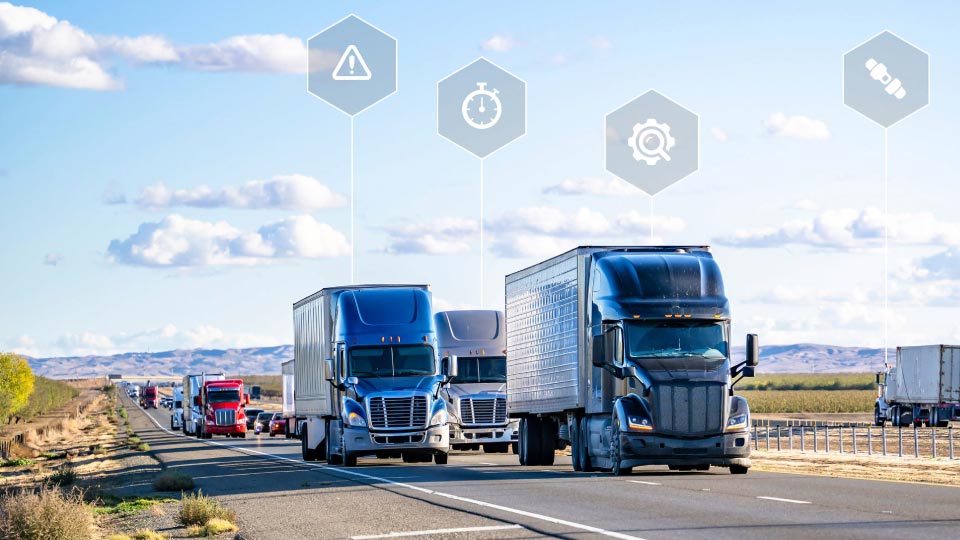
4 ways to unlock the power of quality data
June 30, 2023
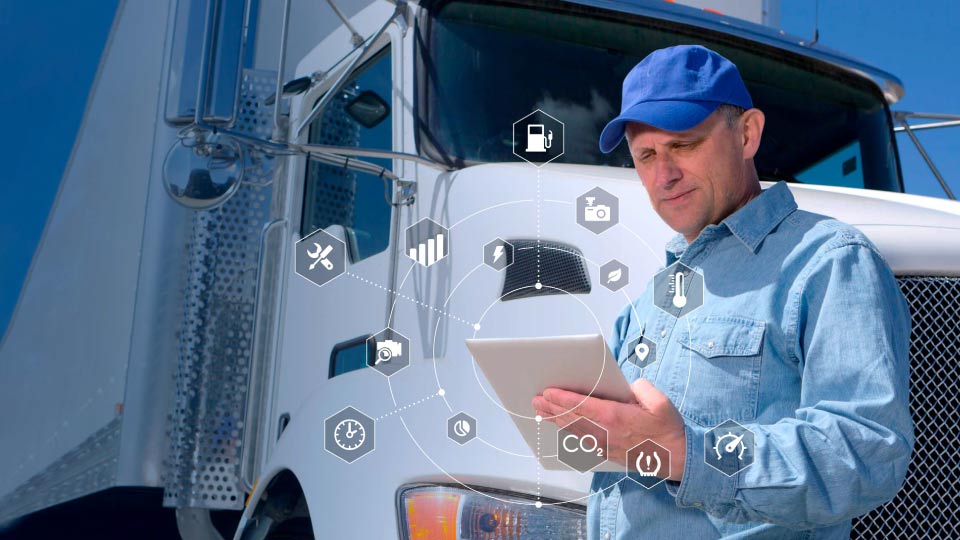
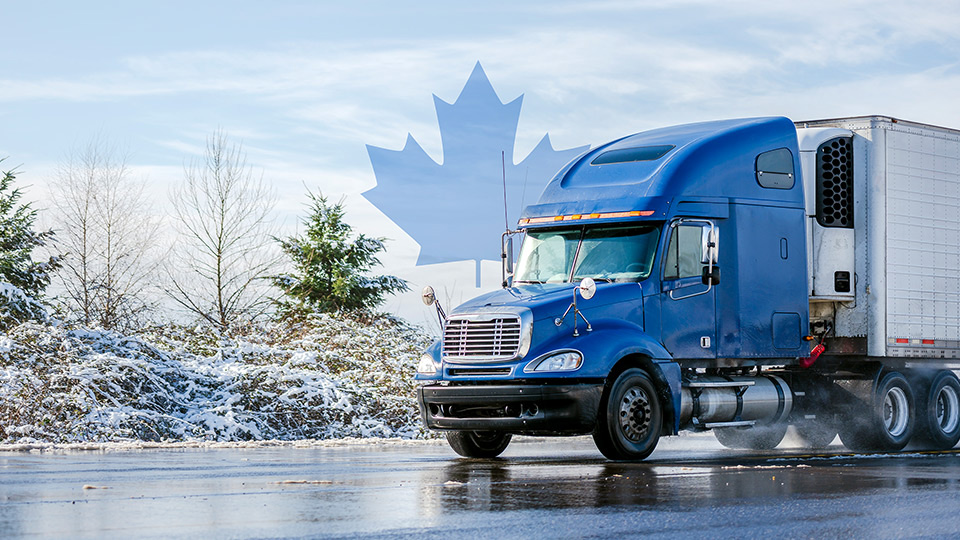
Your comprehensive guide to the Canadian ELD mandate
May 16, 2022
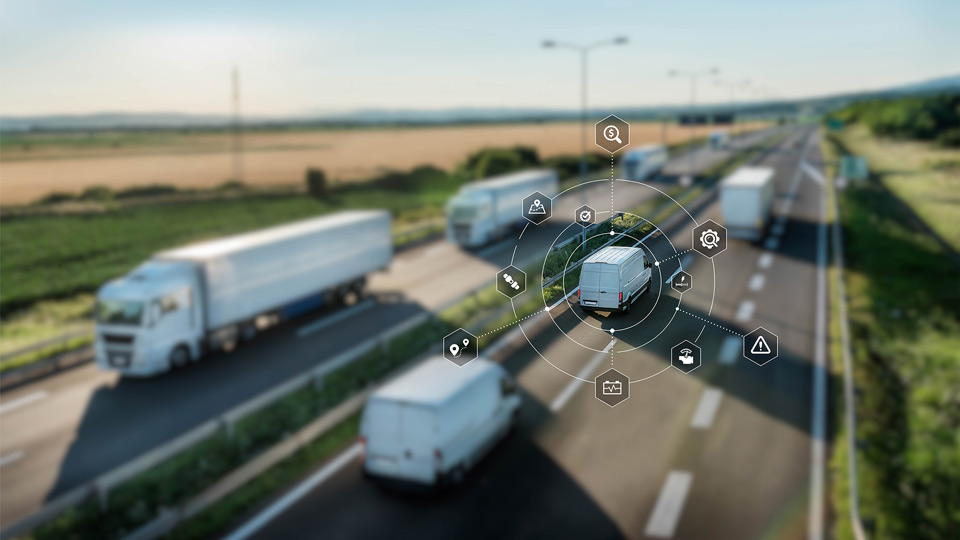
Putting fleet data quality to the test for risk management
March 25, 2022